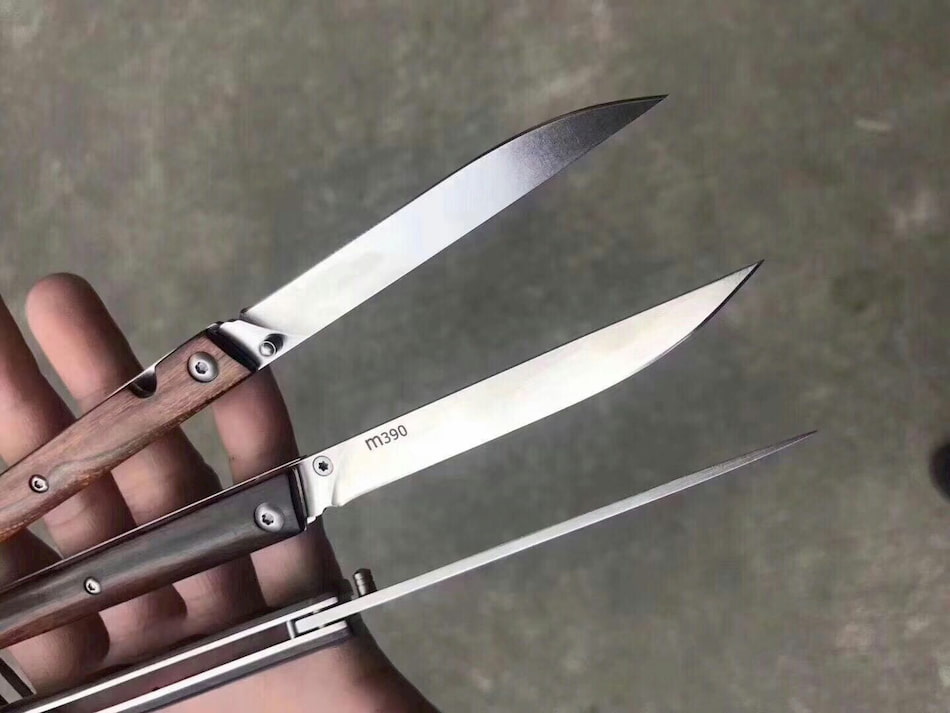
Making the Most Out of a Pocket Knife: A Simple Beginner’s Guide
Pocket knives are handy and compact tools that can be used for both general and self-defence purposes. Although small, pocket knives can be quite strong and extremely durable whilst featuring an ergonomic design. This multi-purpose tool can help you open boxes, letters and peel fruit while at home or when out fishing, camping or when scraping away rust or wet glue. You basically have the capability of a kitchen knife in your pocket. But aren’t they the same thing as Swiss army knives?
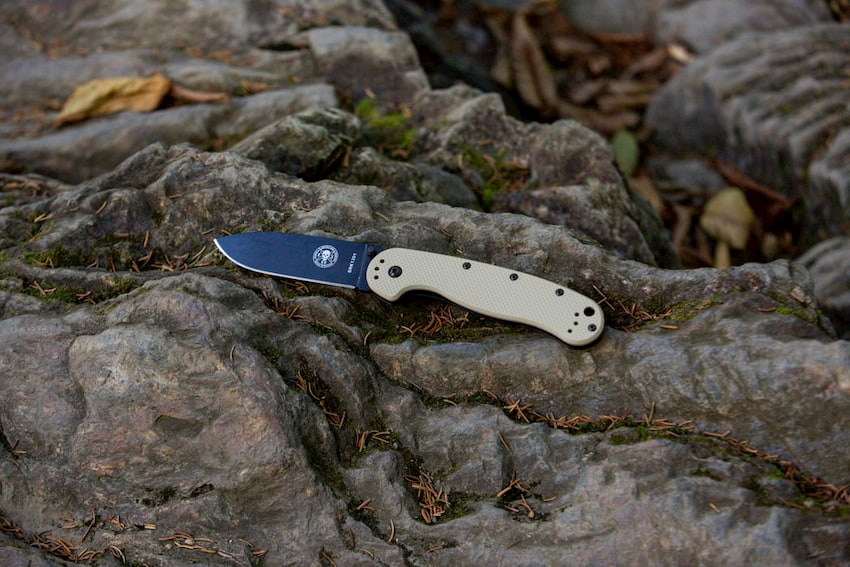
Source: Unsplash
Contents
Pocket Knife vs Swiss Army Knife
The difference between pocket knives and Swiss army knives is that the latter has more tools available. This doesn’t necessarily make the Swiss army knives a better option. A pocket knife is simply more specialised tools rather than an actual multi tool. Both tools are great, it’s what you’ll use it for that will determine your choice. That being said, there are other important things one needs to consider when buing a pocket knife.
Edge
When it comes to the edge, pocket knives can have serrated, partially serrated and plain edges. Plain edge knives allow you to have a lot of control over the cut and they are generally better at push cuts. You cannot saw or perform pull cuts, though.
A fully serrated edge is better at cutting materials than a plain edge as it allows for higher pressure thanks to the teeth. But you can’t make fine cuts with a fully serrated blade as the teeth make the knife clumsy. A partially serrated edge provides the most out of both worlds, just remember that although it has the advantages of both edges it also has their disadvantages.
Blade Length
Small blades are under 7 cm long and are usually allowed everywhere. But they are not as strong as their longer counterparts. Medium length blades range between 7 cm and 10 cm. They are small enough to be carried around in small compartments and long enough to be able to perform more tasks compared to small blades. Medium length knives offer various locking mechanisms but they aren’t legal everywhere. Blades over 10 cm long are considered large and are used for self-defence. These tend to be heavier and don’t always comply with local regulations. They are not practical enough to be used as everyday carry tools.
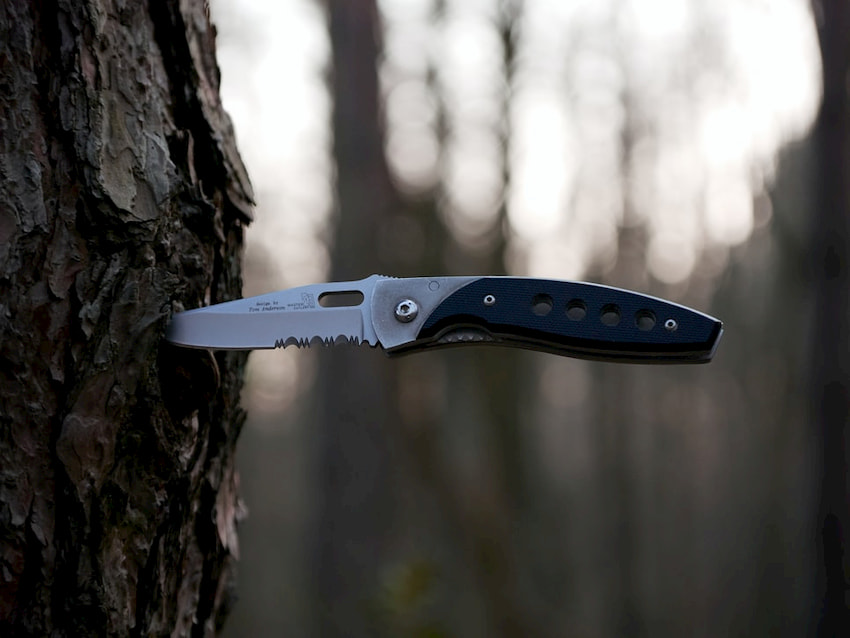
Source: Unsplash
Blade Type
Straight-Back
The straight-back blade is found on most pocket knives and knives in general which is a great all around blade designed for slicing and chopping. It has a curved edge and a straight back.
Drop Point
A drop point blade is also an all purpose blade that has a dull section which goes straight from the handle and slopes down gently to meet the edge. They are ideal for skinning and piercing.
Spear Point
This one has edges that rise and fall equally to meet at a point at the centre of the blade. Spear point blades are best for piercing and slicing.
Clip Point
The clip point blade is one of the most popular blades today. It has a back unsharpened edge in concave shape which makes the tip sharper. A clip point folding camping knife can be used for every day tasks but also for slicing and piercing.
Tanto
A tanto point blade has a high point and a flat grind which makes it ideal for push cuts and for piercing through tough materials. A tanto point blade is also a great all-around option too.
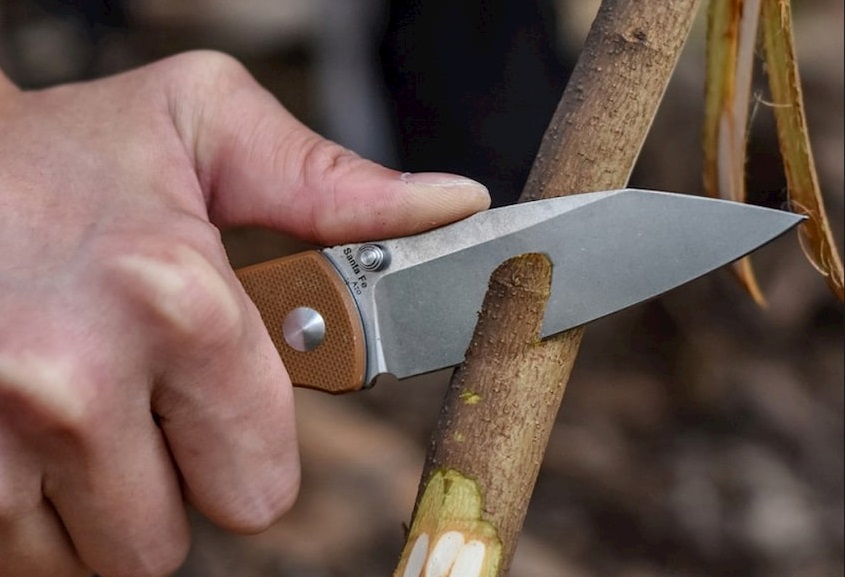
Source: Google
Handle Material
Stainless Steel
Stainless steel handles are extremely durable and strong, they are also corrosion resistant and can render the knife heavy. A stainless steel handle makes for a cold look and it has a lower tension threshold than other metal handles.
Aluminium
With an aluminium handle your foldable pocket knife is going to be light and have excellent grip. These often come coated with a protective film and can be used in harsh weather conditions.
Titanium
Titanium handles have the pros from both aluminium and stainless steel handles. They are corrosion resistant, light and highly durable whilst being extremely strong.
Rubber
Although not as durable as other materials, a rubber handle provides excellent grip. Unlike metal handles they make for a friendlier look.
Zytel
Zytel is a thermoplastic that is resistant to abrasion and impact and it is also quite durable. It features minimal texture which is used by manufacturers to provide better grip.
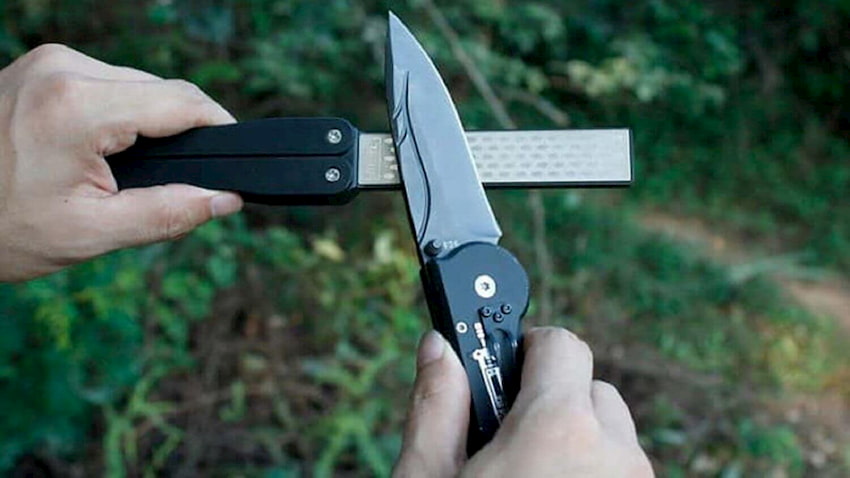
Source: Lifewithkitchen
How to Sharpen a Serrated Edge Pocket Knife?
In order to get the best results when sharpening a foldable pocket knife it’s best that you get a ceramic sharpening rod. Start with pointing the knife’s tip away from your body. Place the rod in each scallop, matching the angle of the serrated bevel as best as you can.
Then gently and carefully start pulling the rod through the scallop and away from the blade to keep your hands safe from the knife’s edge. You need to do this for each serration, which can take a lot of time, but if done properly, it can yield very good results. After you’ve sharpened both sides of the blade make sure you polish it with a leather strop.
How to Sharpen a Stainless Steel Pocket Knife?
With stainless steel plain edge knives sharpening is way easier as it only requires you to slide the knife on a sharpening stone at a certain angle. If your knife is very dull, then set the stone at an angle between 13° and 16 °, otherwise you can go above 16°.
Slide the blade across the sharpener and make sure it is one blade’s width away from the sharpener/ stone. Draw the edge of the blade across the sharpener/stone as if you are trying to slice off a very thin layer. Do this for the other side too and do so evenly. Do 5 strokes on each side but do not alternate between sides.


No Comments